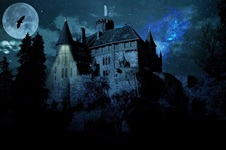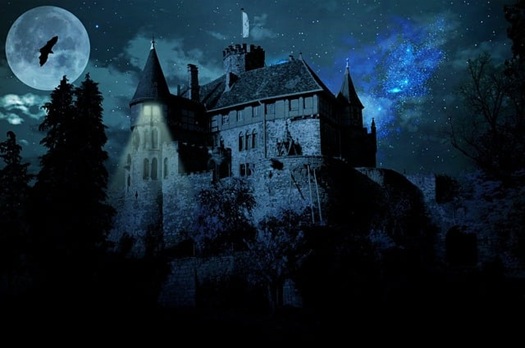Is the Witching Hour Real? Myth Debunked

Is the Witching Hour Real? Myth Debunked
Have you ever felt a chill at midnight, wondering if it’s the Witching Hour when spirits roam free? The witching hour myth claims that certain times, often midnight or 3 a.m., are when supernatural activity peaks, with witches, ghosts, or demons at their strongest. Let’s dive into the origins of this eerie legend, explore its cultural roots, and use science to separate fact from fiction. Join us at omnimyths.com to unravel the truth behind this supernatural myth!
Origins of the Witching Hour Myth
Where did the witching hour myth come from? This spooky tale has deep historical and cultural roots.
Medieval European Beliefs
The concept of the Witching Hour emerged in medieval Europe, when fears of witchcraft were rampant. Church teachings and folklore claimed midnight was when witches held secret rituals, as it marked the “darkest” time before dawn (University of Oxford, 2021). This tied the hour to occult beliefs and supernatural fears.
Christian and Pagan Influences
The idea of a specific time for evil activity may stem from Christian views of midnight as a reversal of Christ’s death at 3 p.m., mixed with pagan rituals held at night. By the 17th century, witch trials in Europe and Salem reinforced the midnight folklore (British Museum, 2022).
Cultural Variations of the Myth
The witching hour myth varies across cultures, reflecting local beliefs about time and the supernatural.
Western Traditions
In Europe and the U.S., the Witching Hour is often midnight or 3 a.m., linked to horror stories and ghost tales. The 3 a.m. version, dubbed the “devil’s hour,” ties to Christian fears of demonic activity (Yale University, 2022). Pop culture, like horror movies, amplifies these supernatural myths.
African Perspectives
In West African folklore, like in Nigeria, nighttime is associated with spirits, but specific hours vary. Some communities believe midnight is when ancestors visit, not necessarily witches, blending reverence with fear (University of Lagos, 2021).
Asian Interpretations
In China, the “ghost hour” around midnight or 1 a.m. is tied to Taoist beliefs about restless spirits. Unlike Western witch-focused myths, these stories emphasize appeasing ghosts, showing a cultural shift in occult beliefs (Peking University, 2023).
Symbolic Meanings of the Myth
Why does the witching hour myth endure? It carries deep symbolic weight.
Fear of the Unknown
The Witching Hour symbolizes humanity’s fear of darkness and the unknown. Midnight, when the world is quiet, feels ripe for supernatural events, reflecting our unease with silence (American Psychological Association, 2022).
Time as Power
The myth assigns power to specific hours, suggesting time itself can be magical or dangerous. This reflects ancient beliefs in cosmic cycles, tying midnight folklore to human attempts to control the uncontrollable.
Modern Interpretations of the Witching Hour
Today’s takes on the witching hour myth blend old fears with new media.
Pop Culture and Horror
Movies like The Conjuring and shows like American Horror Story portray 3 a.m. as a time for paranormal activity, reinforcing supernatural myths. Social media, like TikTok and X, fuels the myth with “Witching Hour challenge” videos, often staged for views (Forbes, 2025).
Spiritual and New Age Views
Modern Wiccans and spiritualists see the Witching Hour as a time for rituals or meditation, not evil. This positive spin contrasts with horror-driven occult beliefs, emphasizing personal empowerment (The Conversation, 2024).
Debunking the Witching Hour Myth
Let’s tackle the witching hour myth with evidence to clear up misconceptions about its reality.
No Scientific Evidence
No scientific studies confirm supernatural activity at midnight or 3 a.m. Claims of increased paranormal events are anecdotal, not factual, debunking is the witching hour real (Smithsonian Institution, 2022).

Psychological Explanations
- Sleep cycles: REM sleep disruptions can cause anxiety.
- Circadian rhythms: Body clocks dip at night, amplifying fear.
- Stress: Nighttime amplifies worries, not spirits (National Institutes of Health, 2022).
Historical Context
The witching hour myth grew from medieval fears of witchcraft and religious propaganda, not evidence. Witch trials used these tales to justify persecution, showing the myth’s roots in social control (University of Cambridge, 2021).
Modern Misinterpretations
Viral “Witching Hour” videos are often hoaxes or misinterpretations of natural events, like creaking houses or animal noises. Science attributes these to environmental factors, not ghosts (National Geographic, 2023).
Understanding the Myth’s Appeal
Why does the witching hour folklore persist despite being debunked?
Cultural Fascination
- Mystery: Nighttime’s quiet fuels supernatural stories.
- Storytelling: Scary tales captivate and warn communities.
- Tradition: Myths pass down cultural fears and values.
Psychological Draw
- Fear response: Darkness triggers primal instincts.
- Imagination: The mind fills quiet hours with eerie ideas.
These factors keep supernatural myths alive (American Psychological Association, 2022).
Conclusion
The witching hour myth enchants with its spooky allure, but science shows it’s a product of fear, not fact. From medieval witch hunts to modern horror, this legend reflects our fascination with the unknown, not reality. Let’s enjoy the chills but trust the truth. Explore more supernatural myths at omnimyths.com!
Frequently Asked Questions
Q: Is the Witching Hour a real phenomenon?
A: No, the witching hour myth lacks evidence; it’s rooted in folklore, not fact (Smithsonian Institution, 2022).
Q: Why is 3 a.m. called the Witching Hour?
A: It’s tied to Christian fears of demonic activity, contrasting Christ’s death, fueling midnight folklore (Yale University, 2022).
Q: How do cultures view the Witching Hour?
A: Western tales focus on witches, while African and Asian myths involve spirits, showing varied occult beliefs (Peking University, 2023).
Q: Why do I wake up scared at 3 a.m.?
A: Sleep disruptions and stress, not spirits, cause unease, debunking witching hour myths (NIH, 2022).
Q: How does pop culture keep the myth alive?
A: Horror movies and social media amplify supernatural myths, making the Witching Hour seem real (Forbes, 2025).
Q: What’s the difference between midnight and 3 a.m. myths?
A: Midnight ties to witch rituals, 3 a.m. to demons, but both are fictional in witching hour folklore (University of Cambridge, 2021).